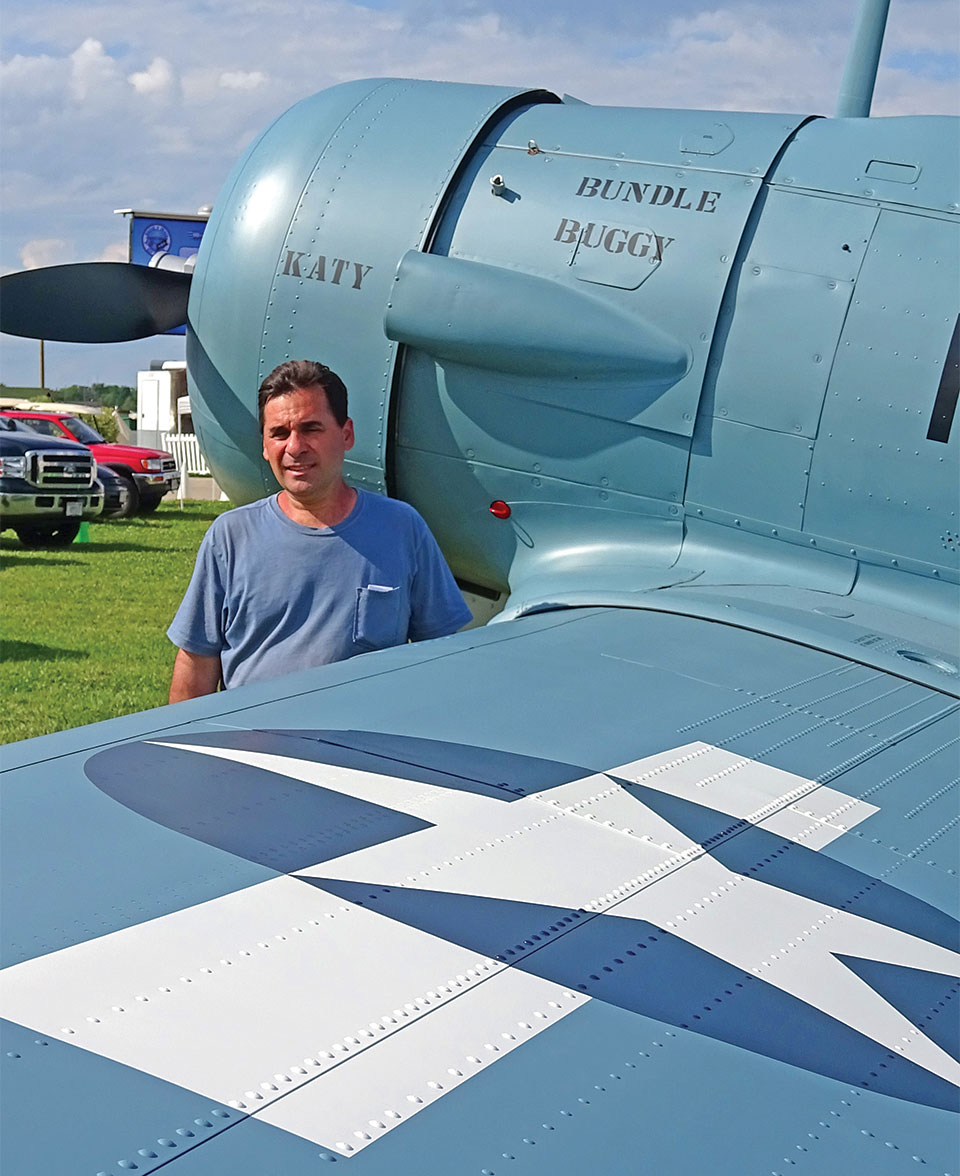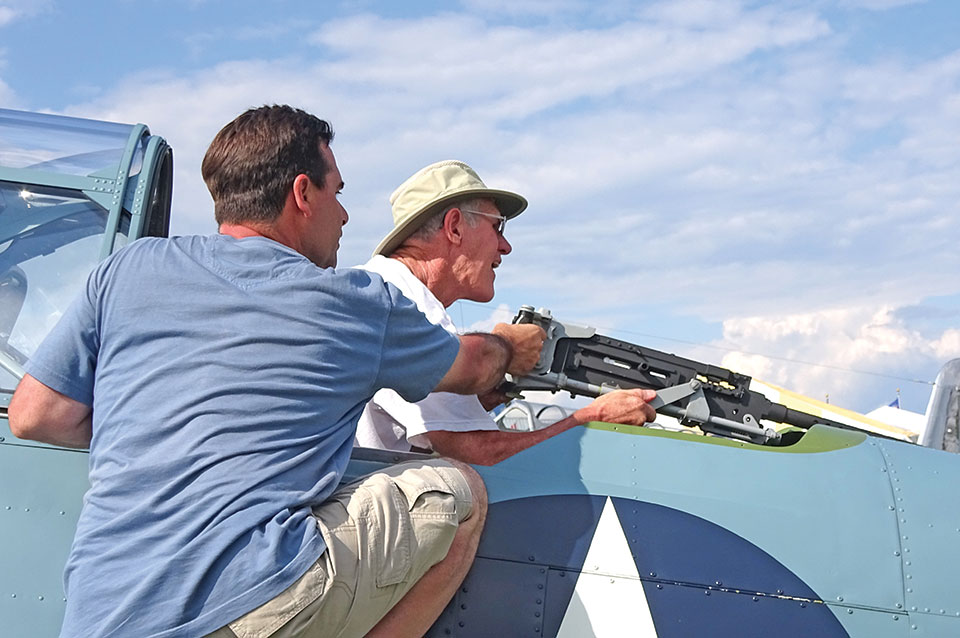This SNJ-4 Texan Came to Compete
By Frederick A. Johnsen
July 24, 2017 - With more than 40 World War II North American Texan trainers already parked at AirVenture 2017, it takes a little panache to stand out from the crowd. The team supporting Fagen Fighters WWII Museum of Granite Falls, Minnesota, came to compete. They brought their museum’s 2017 restoration of a combat-representative SNJ Texan, covered in dusty blue and gray United States Marine Corps markings.
The inspiration for this restoration is a small contingent of SNJs used by Marine Air Group 11 for artillery spotting around Espiritu Santo in the Pacific, explained Evan Fagen. The restoration employed just about every type of armament and equipment any Texan ever carried. The rear seat swivels to face aft, and a slot in the aft fuselage allows a .30-caliber gun mount to be raised into firing position. Another .30-caliber weapon protrudes from the right wing, and a third nests in the top of the cowling.
New-old-stock Texan bomb shackles hold a pair of lightweight replica bombs beneath each wing. In the landing-light housing in the left wing, a red passing light shares space behind the Plexiglas cover. Such lights provided nocturnal see-and-avoid capability when this SNJ was new — and it’s another nice, authentic vintage touch. But the biggest secret is this Texan’s reconnaissance camera mount in the aft fuselage, which is capable of housing a bulky F-56 camera made by Fairchild. Mark Denest, whose company, MD Aero, did the restoration in Smoketown, Pennsylvania, said this fuselage is fitted with ventral doors that open to give the camera a downward view. One of the cameras is on display beside the Texan in the Warbirds area.
This Texan has other elements that speak well for the restorers’ craft. In the top of the wings directly over each main landing gear, a clear Plexiglas panel, as per the manual, gives the pilot visual confirmation of the landing gear’s position, Mark said. Another restoration feature is a pilot’s relief tube, a rustically effective bit of plumbing that could offer relief on long missions. This Texan is an SNJ-4, carrying bureau No. 27234 on its tail. The convincing paint job is the work of Lancaster Aero in Pennsylvania, Mark said.
Most Texans were used as trainers in the United States, where the combat features of this restoration would be used to hone the skills of fledgling aviators before they went overseas. This SNJ restoration bears witness to that training, as well as the Marines’ employment of SNJs in the Pacific.
The look of this Texan, nicknamed Bundle Buggy, easily conjures the war in the Pacific. That authenticity doesn’t come easy. Bundle Buggy was restored over a five-and-a-half-year period.
Mark said, “We just sort of get into these things and keep going.” The drive to complete such a project, with inevitable hurdles and searches for specific 75-year-old parts, is compelling. Its completion is almost anticlimactic, although showing the finished product for the public — and for judging at AirVenture — is rewarding. Mark and Richard Justice, who is also from MD Aero, came to AirVenture 2017 to display the Texan they labored over for so many years.


